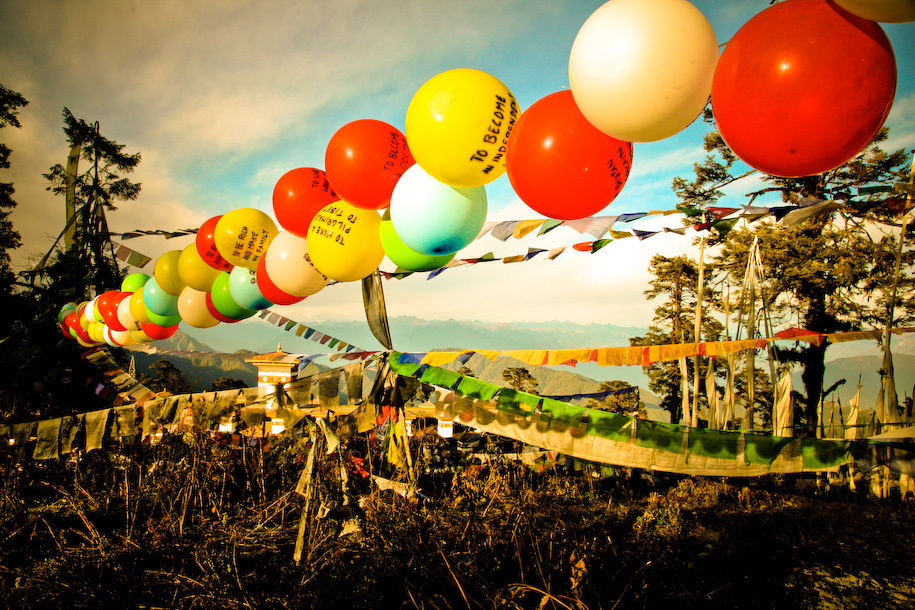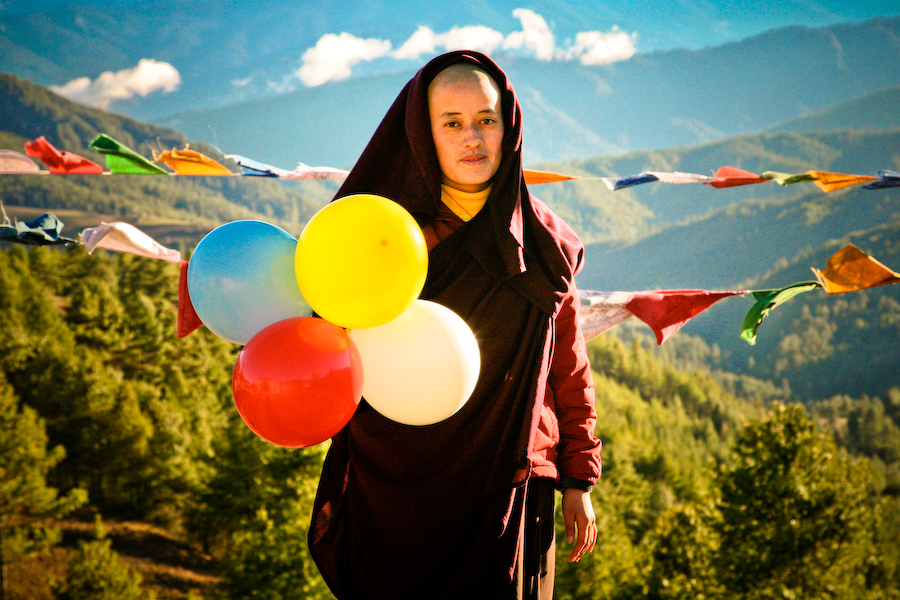Balloons of Bhutan
Balloons of Bhutan is a literal portrayal of happiness in the last Himalayan kingdom, Bhutan, by artist and anthropologist, Jonathan Harris.


Balloons of Bhutan is a literal portrayal of happiness in the last Himalayan kingdom, Bhutan, by artist and anthropologist, Jonathan Harris.
The inspiration for the project developed through the principle that Bhutan uses ‘Gross National Happiness’ instead of ‘Gross National Product’ to measure its socio-economic prosperity. The country essentially organises its national agenda around the basic tenets of Buddhism. The idea was introduced in 1972, to give the tiny country some international clout and guard against potential future invasion by its two mighty neighbours, India and China.
Harris travelled to Bhutan and engaged with local communities. He asked people five questions about their happiness: what makes them happy? What is their happiest memory? What is their favorite joke? What is their level of happiness between 1 and 10? And if they could make one wish, what would it be? Based on each person's stated level of happiness, he inflated that number of balloons. He then wrote each person's wish on to a balloon of their favorite colour. He repeated this process for 117 different people, from different ages and backgrounds.
On the final night, all 117 wish balloons were re-inflated and strung up at Dochula, a sacred mountain pass at 10,000 feet, leaving them to bob up and down in the wind, mingling with thousands of strands of prayer flags. The Balloons of Bhutan is an extension of the growing desire to be able to measure and quantify the degree of happiness in a specified demographic.




Discussion